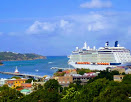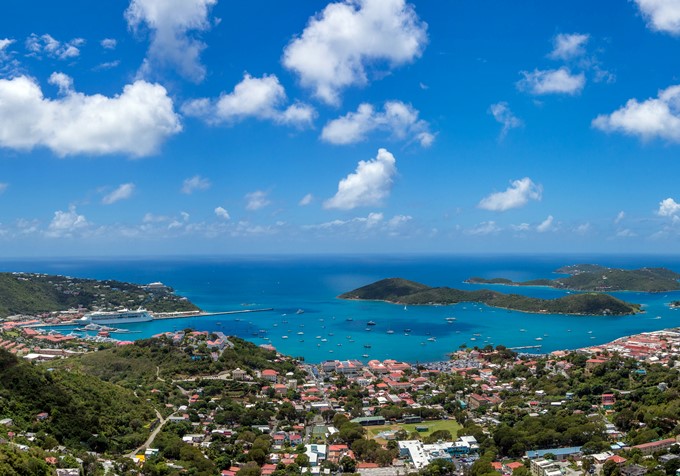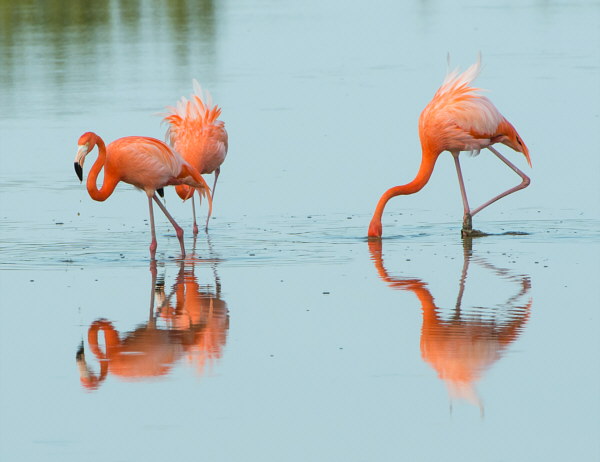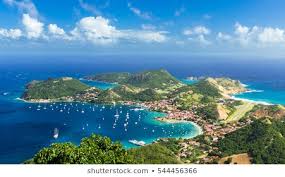Island of Martinique
 In the picturesque green necklace of the Lesser Antilles, stretching a long puff from Haiti and Puerto Rico to the mouth of the Orinoco River and further along the Venezuelan coast, there is an island with a particularly lush nature and especially turbulent history.
In the picturesque green necklace of the Lesser Antilles, stretching a long puff from Haiti and Puerto Rico to the mouth of the Orinoco River and further along the Venezuelan coast, there is an island with a particularly lush nature and especially turbulent history.
Generally speaking, the chain of volcanic islands washed by the warm waters of the Caribbean Sea has many beautiful and interesting corners. Cozy bays and coral buildings, proud cliffs and pearl shoals, palm-fringed beaches and fantastic outlines of coastal cliffs polished by the surf – which is not found on the Antilles!
Even the names of these islands sound exotic and musical, like the words of a pensive song performed somewhere on the shore under the rustle of palm trees and the splashing of tropical waves: Dominica and Anguilla, Antigua and Guadeloupe, Barbuda and Curacao, Saint Lucia and Blanquilla …
Travel Club of Pavel Aksenov. France. The island of Martinique. Martinique landscape with a plantation house & volcano in the background, Martinique, Caribbean, France. Photo LisaStrachan – Deposit
On these fertile shores, covered with the warm breath of the trade winds, moist mountain forests have splendidly grown, sometimes replaced by palm savannahs.
In the central parts of the islands, cones of extinct and active volcanoes rise. Some of them, for example, Soufriere on Guadeloupe, Diabloten on Dominica or Mont Pele on Martinique, rise almost one and a half kilometers above sea level and serve as beautiful natural lighthouses for sailors.
The contrasting combination of harsh volcanic mountains and cheerful verdant groves at the foot of their basaltic cliffs gives the Antilles a special charm.
Travel Club of Pavel Aksenov. France. The island of Martinique. Homes on coast of French Martinique in the Carribean. Photo dbvirago – Depositphotos
But the large island of Martinique, located in the center of the Antilles island chain, is known to the whole world not because of its picturesque forests, banana plantations or endless sandy beaches, which at night huge sea carriage turtles crawl out on.
Immediately make a reservation that this island can be considered large only by Antilles standards – its area is slightly larger than the area of Moscow. But of all the Lesser Antilles, it is second only to Guadeloupe in size, and that is quite a bit.
And world fame came to Martinique in 1902, and came for tragic reasons. Central America that year was generally extremely “lucky” for disasters. In January, a major earthquake occurred in Guatemala, destroying many houses and claimed thousands of lives.
And in May there was a monstrous explosion of the volcano Isalco in El Salvador, which also did a lot of trouble. In July, the eruption of Masaya volcano began in Nicaragua, and shortly afterwards, the Santa Maria volcano in Guatemala. And again, villages burned and collapsed, coffee, sugar and banana plantations were destroyed, people died …
But the tragedy that befell Martinique in May 1902, surpassed in scale all the natural disasters of this region and has since been considered one of the most terrible volcanic catastrophes in history.
Travel Club of Pavel Aksenov. France. The island of Martinique. Photo claudiobruni – Depositphotos
Even the shocking world twenty years before the explosion of the volcano Krakatau in Indonesia pales in the face of the disaster that struck Martinique.
The horror that gripped people when they learned the details of a monstrous and destructive eruption was compounded by the fact that this eruption itself was very special, unusual. Before the tragedy in Martinique, nothing was known about such manifestations of the formidable underground element.
For half a century, the small Antilles port of Saint-Pierre has quietly flourished at the foot of the Mont-Pele volcano, almost not paying attention to the cloud of smoke that sometimes appeared above the top of the mountain. The volcano was already erupting in 1851, but then the eruption was weak and did not affect populated areas.
Everyone was accustomed to Mont-Pele, so spectacularly closing the view from the sea to the panorama of the bay, and considered the volcano to be something like a beautiful decoration, complementing the colorful tropical landscape of the city’s environs.
Sometimes on Sundays, excursions were arranged on the mountain, ending with a fun picnic on the edge of the crater, which was only eight kilometers along the green wooded slopes.
Travel Club of Pavel Aksenov. France. The island of Martinique. Martinique, picturesque city of Morne Rouge; in west indies. Packshot photo – Depositphotos
In mid-April 1902, residents began to notice that the peak of Mont-Pelet began to smoke heavily, but this did not alert anyone and did not bother. The cloud of smoke, meanwhile, was thickening and getting dark.
From time to time, thick black puffs of smoke burst forth from it with force, and the most curious Saint Pierrees, who had risen closer to the top, said that deaf underground bangs were heard on the upper slopes.
Soon, excursions to the volcano ceased, as the layer of ash that covered the approaches to the summit made the stay at the top not too comfortable. The peals began to intensify, the column of smoke increased even more and turned black.




